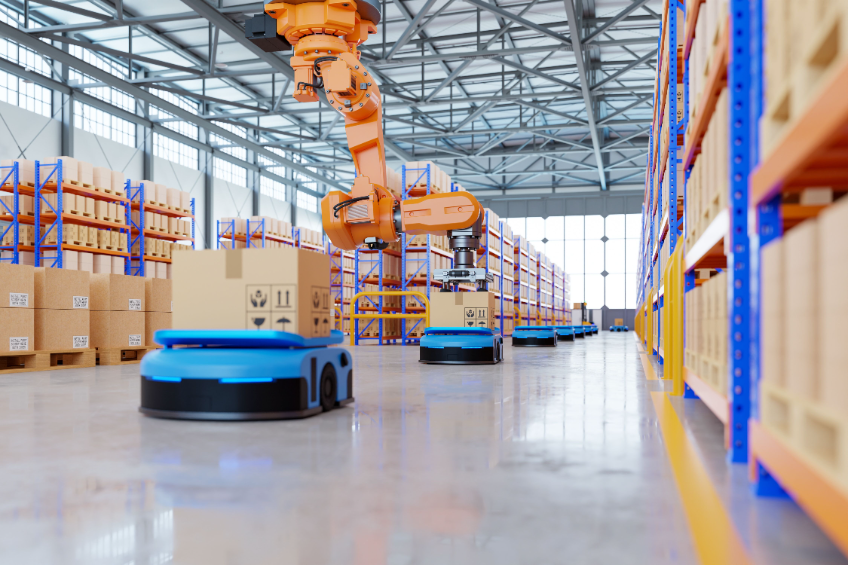Future-Proofing Manufacturing Operations with Automation
Manufacturers are faced with the constant struggle to increase efficiency, retain skilled labor and cut costs, while simultaneously planning for the future of the business. The good news is that adopting automation technologies now can help industrial facilities manage today and ensure success tomorrow by overcoming current and upcoming challenges.

How Automating the Factory Ensures Success
Future-proofing, by definition, is the practice of anticipating the future and developing ways to minimize the effects of prospective problems. Since many of today’s obstacles can negatively impact the operation of tomorrow’s facilities, integrating automation now can help mitigate the effects of today’s struggles, while also establishing the foundation for a prosperous future. This is because modern automated technologies are designed to increase efficiency, productivity and throughput; provide flexibility for changing operations; and help alleviate labor shortages, which provides the agility needed to remain competitive today and lays the groundwork for a successful tomorrow. Some of the most advantageous benefits of automation include:
Improved product quality and consistency: Mistakes and faulty products are often the by-product of human error. Automated equipment is programmed to consistently and accurately perform a task the same way every time, eliminating quality issues that result from human error. The consistency of automation also ensures that there is no deviation in the way the product is assembled or processed (as there might be when produced by different employees), guaranteeing the same customer experience each time. In addition, new automation technologies often involve machine vision and smart sensors, which can be used for highly accurate inspection and quality control, further boosting product quality now and in the future.
Increased uptime: Internet of Things (IoT)-enabled technologies, smart sensors and data analytics can be used to assist manufacturers with predictive maintenance. When combined, these technologies can monitor automated machinery and send alerts when equipment needs service, allowing technicians to schedule maintenance activities before catastrophic failure occurs. This boosts uptime and reduces the costs associated with unplanned downtime. Downtime-related production outages can cost hundreds of thousands of dollars in lost throughput, as well as expensive equipment repair or replacement costs, but modern, IoT-enabled automation technologies can prevent this, reducing costs now and in the future.
Alleviating labor shortages: Reports and studies consistently cite labor shortages as a major problem now and into the future. A recent study by Deloitte estimates that manufacturers will need to fill 4 million jobs by 2030, but that a shortage of workers is expected to leave 2.1 million of these positions unfilled. While higher wages and other incentives may help offset this imbalance, it’s likely still not enough. Automation, however, can help fill this gap. Automated equipment can perform repetitive and boring tasks that do not require complex thinking, as well as those that are dirty or dangerous, thus freeing up skilled workers to manage more rewarding tasks that are of higher value to the company.
Increased productivity: The core business of manufacturing facilities is to produce products. The speed and efficiency of automated equipment enables more productivity and throughput than is possible if performed with manual labor over the same period of time. In addition, automated equipment does not require breaks, time to change shifts or vacation days, further boosting productivity. For these reasons, adding automation to a manufacturing facility undoubtedly increases productivity and throughput. The increased productivity that results from automation typically provides a swift return on investment, so capital spent on automation now will pay off in the future as the facility will continue to produce at higher rates.
3 Automation Technologies for Future-Proofing
Manufacturers that want to remain competitive and future-proof their long-term profitability should consider investing in automation technologies now. Three of the most beneficial include:
- Robots and Cobots: Industrial robots and collaborative robots are an obvious answer to labor shortages and the need to increase efficiency, productivity and throughput. They swiftly manage repetitive tasks such as assembly, sorting, pick and place, material handling, packaging, palletizing and other duties around the facility that do not require complex problem-solving skills. In addition, they can be applied in areas that are too dangerous, dirty or hazardous for human workers. Further, collaborative robots are simple to program and easy to move around the facility, making them a great option for future-proofing a manufacturing facility that anticipates upcoming production changes.
- Internet of Things/Digitalization: IoT and digitalization of the plant combine various technologies such as automated equipment, sensors, data analytics and cloud integration to enhance transparency into the manufacturing process. Digitally connecting a facility with these modern automation technologies allows predictive and proactive maintenance, real-time analytics and equipment and process optimization because digital and IoT-enabled technologies analyze collected data and communicate relevant information to operators to alert them when parameters are out of spec or maintenance may be needed. This helps optimize the performance of the plant and reduces costly downtime.
- Machine Vision: When automated equipment is enhanced with machine vision, it opens the door to many opportunities. Products will be more carefully and accurately inspected, robots and cobots can offer expanded capabilities if they can “see” objects and sort, pick or pack them according to color or shape, products in warehouses can be accurately selected for packaging and every operation can be inspected for defects, enhancing product quality and eliminating errors.
Future-proofing looks a lot like tackling today’s issues while simultaneously planning for the longevity of the business, so smart manufacturers are prioritizing investments in these automation technologies now to get a head start on securing a profitable future. Contact JHFOSTER to learn about integrating automation technologies for success today and tomorrow.
